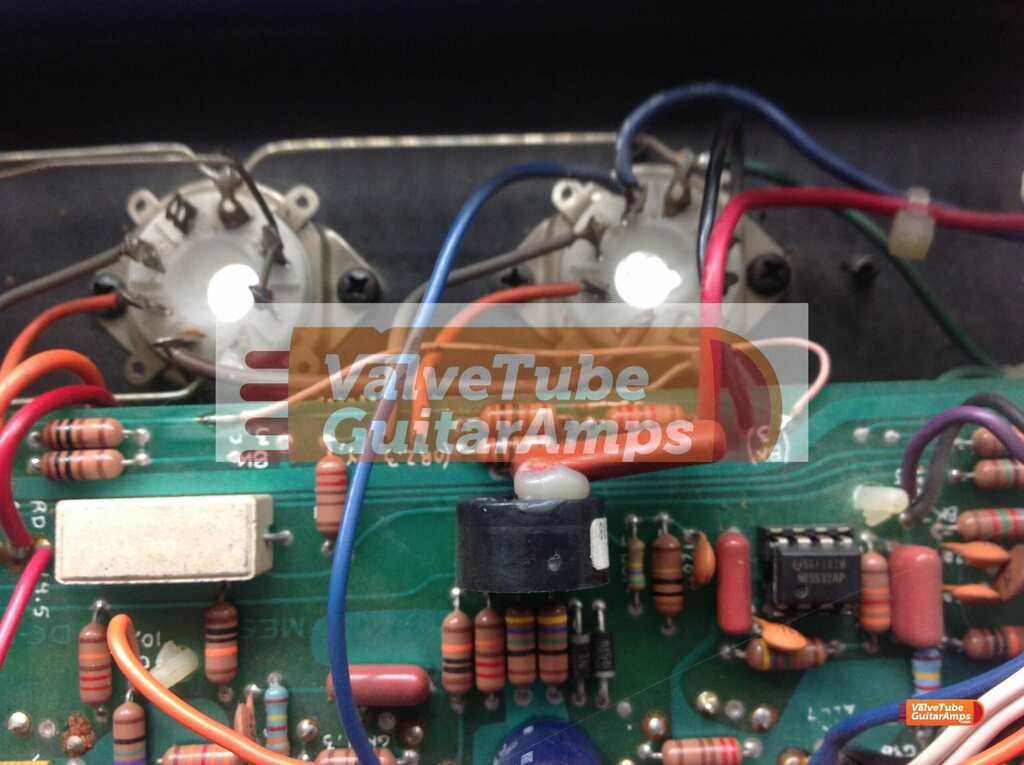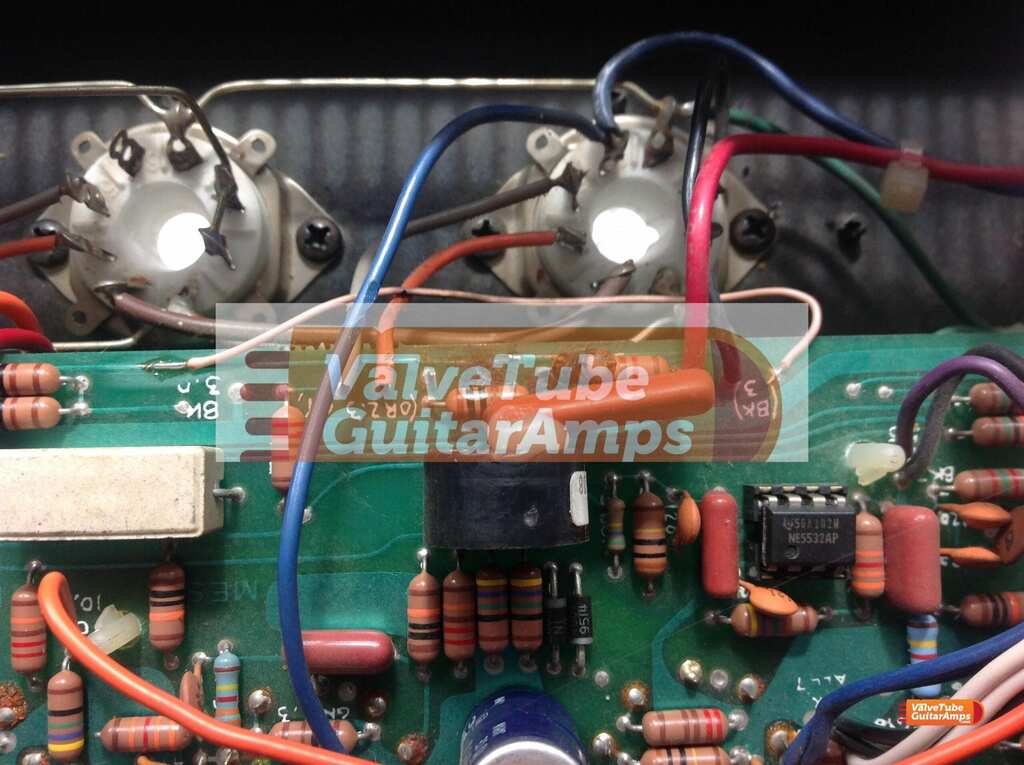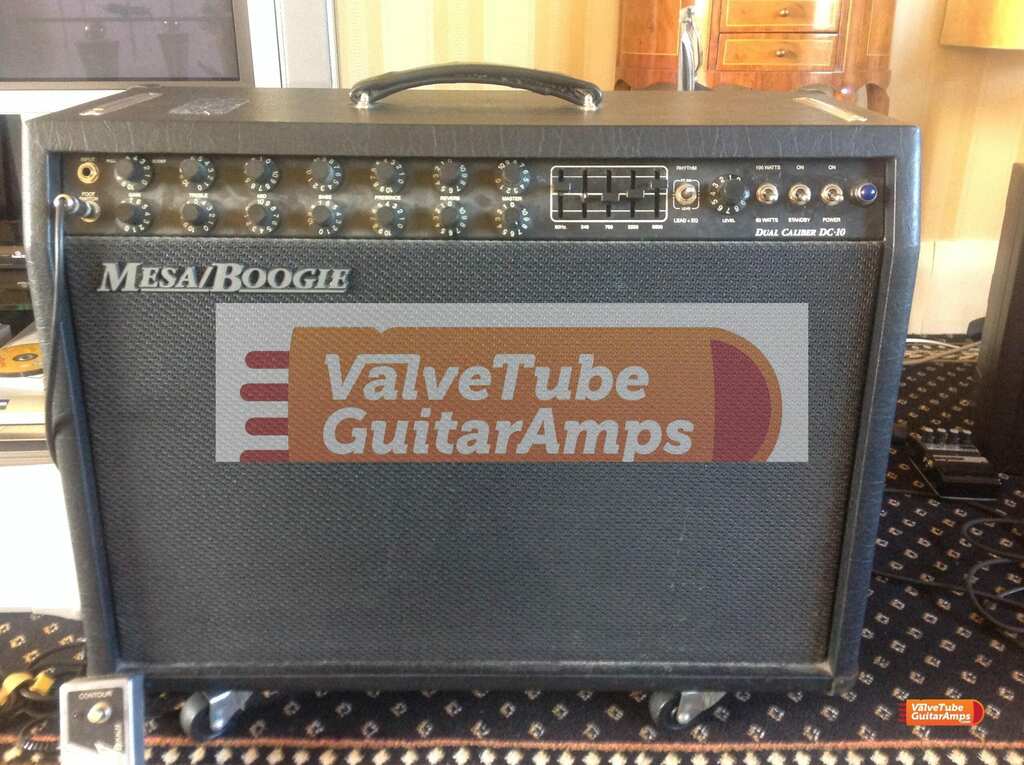A very sick Mesa Boogie Caliber DC 10 amp arrived for me to have a look at. Our first Mesa Boogie Amp repair. This one had one dead channel and my 22 watt Fender Deluxe was as loud as this amp. The Mesa Boogie is a 100 watt amp so something was up. It also sounded naff.
Mesa’s have a reputation of being complex and difficult to repair. I had never seen inside one but my view is that it is a tube amp so what can be so complex.
Tapping the pre-amp valves immediately showed up problems of microphonics and banging and cracking.
Date codes suggested these pre-amp valves were at least 8 years old. I put them on the valve tester and they showed as either dead or worn. The amp was fitted with four JJ 6l6GC’s and testing them showed them to be well worn too. They looked it too !
The owner does a lot of gigging so it is not surprising this amp was feeling a bit sorry for itself. `it lo hd excessive mains hum so that fault also needed fixed.
It was noted that one of the 6L6GC clearly had a problem in the past because the tracking on the pub was scorched and the pcb tracking had to be bridged with wire. With the amp having low output power. I did not need to test this as my ears were working perfectly as the diagnostic tool. I then tested all the resistors on the burnt area. They all looked fine. See the picture below.

However the 1 KΩ resistors were now 35Ω !!
So I de-soldered them in order to replace them.
They were burnt to a crisp underneath and all carbonised. Carbon is a good conductor which explains the 35Ω values
You can see in the picture below the lifted resistors in the top of board. I should asked for them done rare as opposed to well done.

So, the resistors were replaced and then the amp was tested. Wow is it loud and it has some great tones with its lead and rhyme settings. It had its Mojo back!
There was still the mains hum and this was tracked down to an oxidised earth on the reverb drive. The amp lives next to the North Sea and the sea air does play havoc with the connectors in sorts of connectors in amps and consumer equipment
Other stuff like cleaning the pots, and fixing the mains socket were done and of course the amp was safety tested too.
So the myth of the Mesa Boogie was de-bunked for me. The downside is that there are no connectors in this amp. Everything is soldered. This has the big advantage of removing the unreliability that connectors create as they age. The downside mean that the amp is a pain to dismantle.
There are muting circuits in these amps and the are controlled by FET transistors. These can fail and cause these amps to be muted permanently. Fortunately, this amp was all ok.
What I believe has happened to this amp is that an original output valve went short circuit and this burnt out the tracks. what could not be seen is that the grid resistors were still working but were the walking wounded. Over a number of years they deteriorated having had the roasting when the output valve when short circuit.
My takeaway was that don’t expect your valves to last into the next millennium. If you use the amp really regular, then change the output valves every 18 month s. Its cheaper than waiting till a bunch of damage is done to the amp.
the vale line up that was fitted to this amp was as follows:-
V1 Tung Sol 12Ax7 for rich tone without loosing the top end plus low microphonics
V2-V4 JJ Electronic ECC83S. We have a special value quad pack of JJ ECC83S
V5 Tung Sol 12AX7 Matched/balanced with good emission for the phase splitter
V6-V10 JJ 6L6GC Matched for anode current and Gm.
We sell all of these valves. Check out the links above!
So I actually enjoyed fixing my first Mesa Boogie amp repair 🙂
We repair valve amps locally to the Scarborough area . It is not our main business but one we enjoy !. Recent amps repaired are Marshalls, Fenders, Vox, boutique 5E3 with 4 x6V6 and now we can add Mesa Boogie to the list. We specialise in the hard to fix category too. Contact us for advice and if you have a valve/tube amp problem

